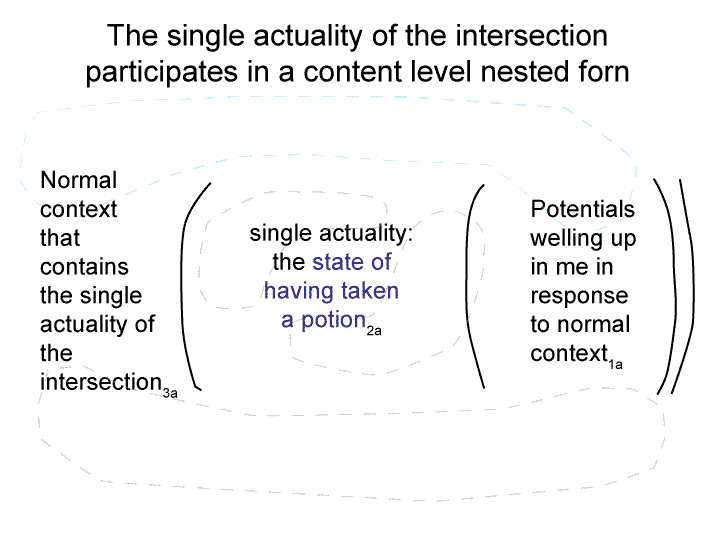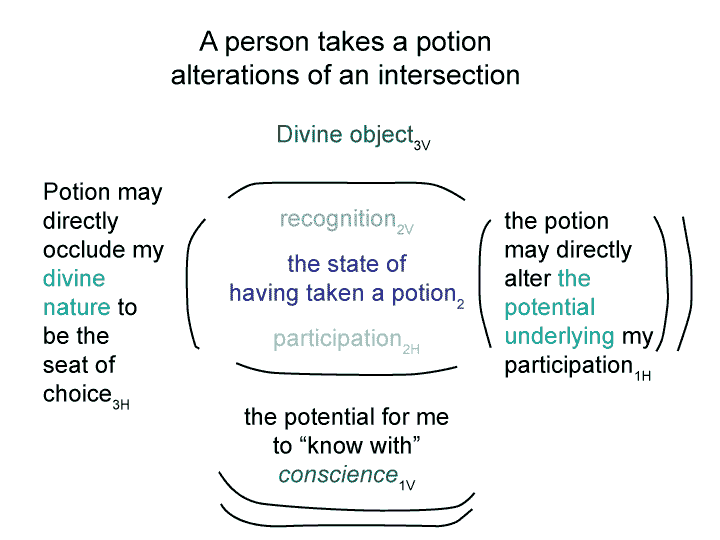Man and Sin by Piet Schoonenberg (1964) 2.1FG
Summary of text [comment] pages 69 through 71
[Let me attempt another example.
After meeting failure, a person drinks way too much vodka.
Here, the potion is vodka and the state of existence is self-destruction.
The normal context for the single actuality is despair. ‘The potential welling in response’ is ‘drowning in sorrow’.
Alcohol enters the bloodstream.
The drinker’s dispositions are the first to register the effect. “His” divinely appointed natural volition starts to slip. “His” ability to think changes.
The alterations of the horizontal axis are hidden. They just happen. “He” gets drunk.
That is how far “his” awareness of the horizontal axis goes.]


